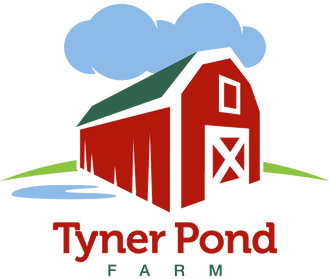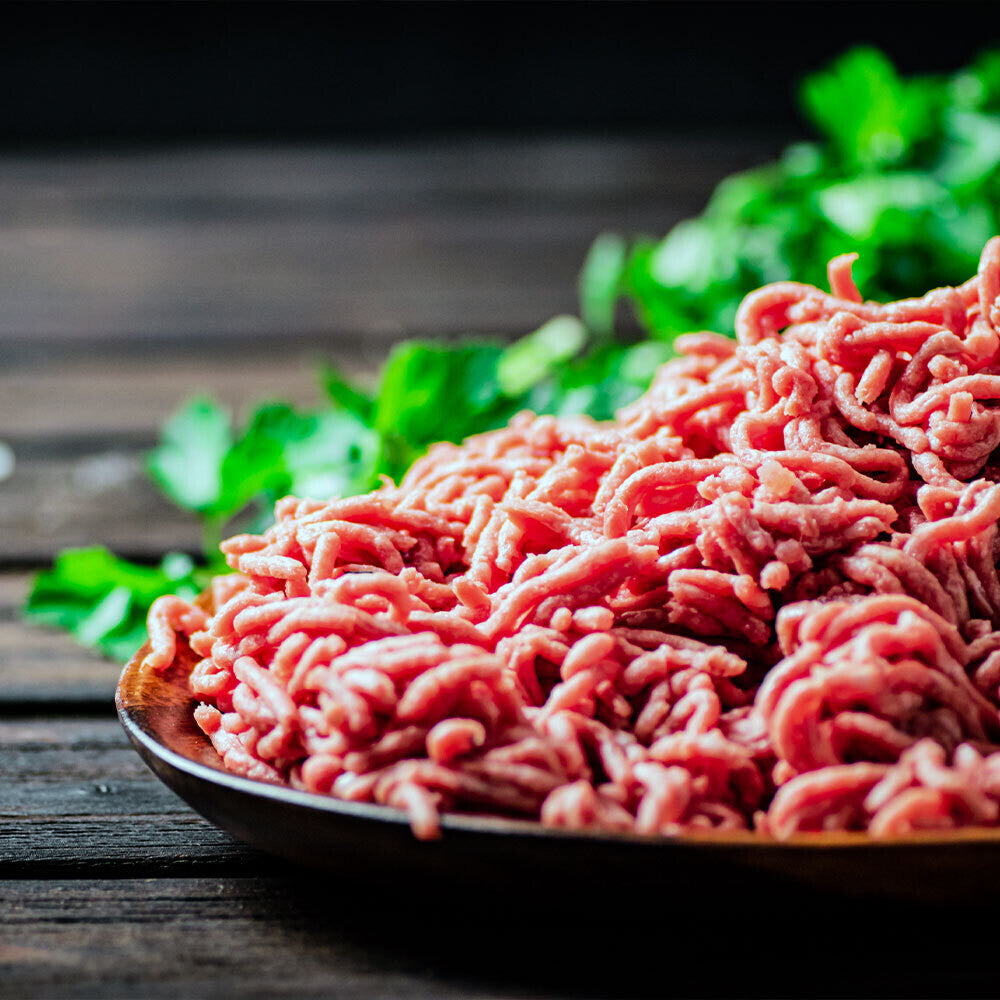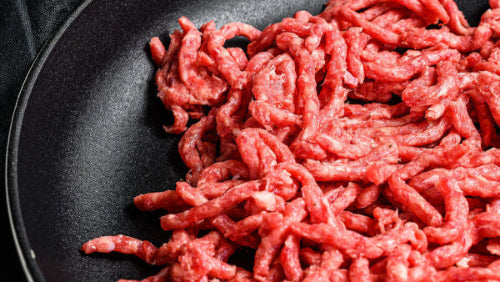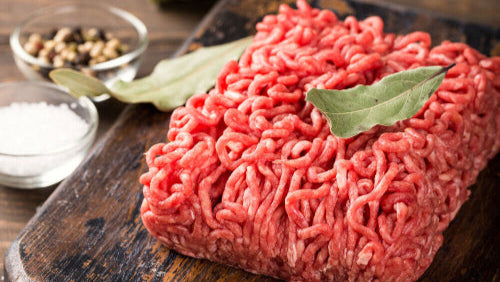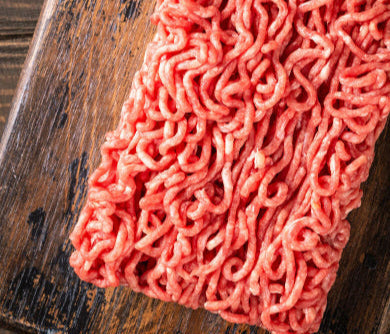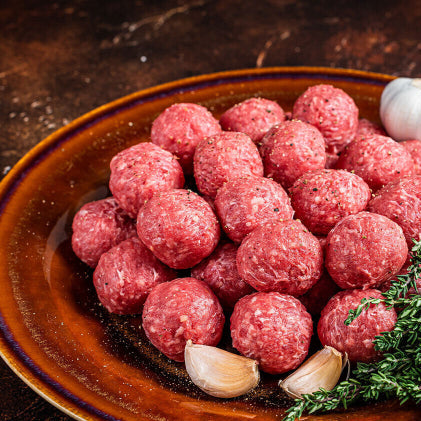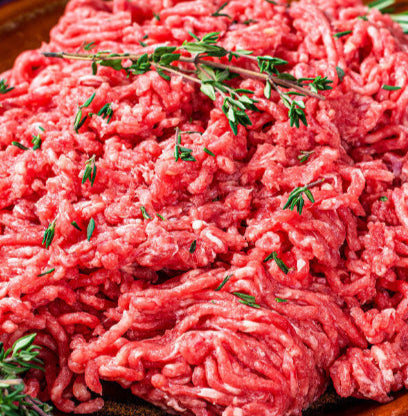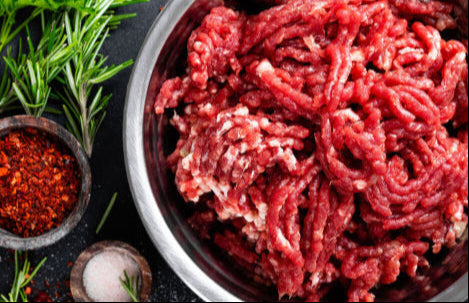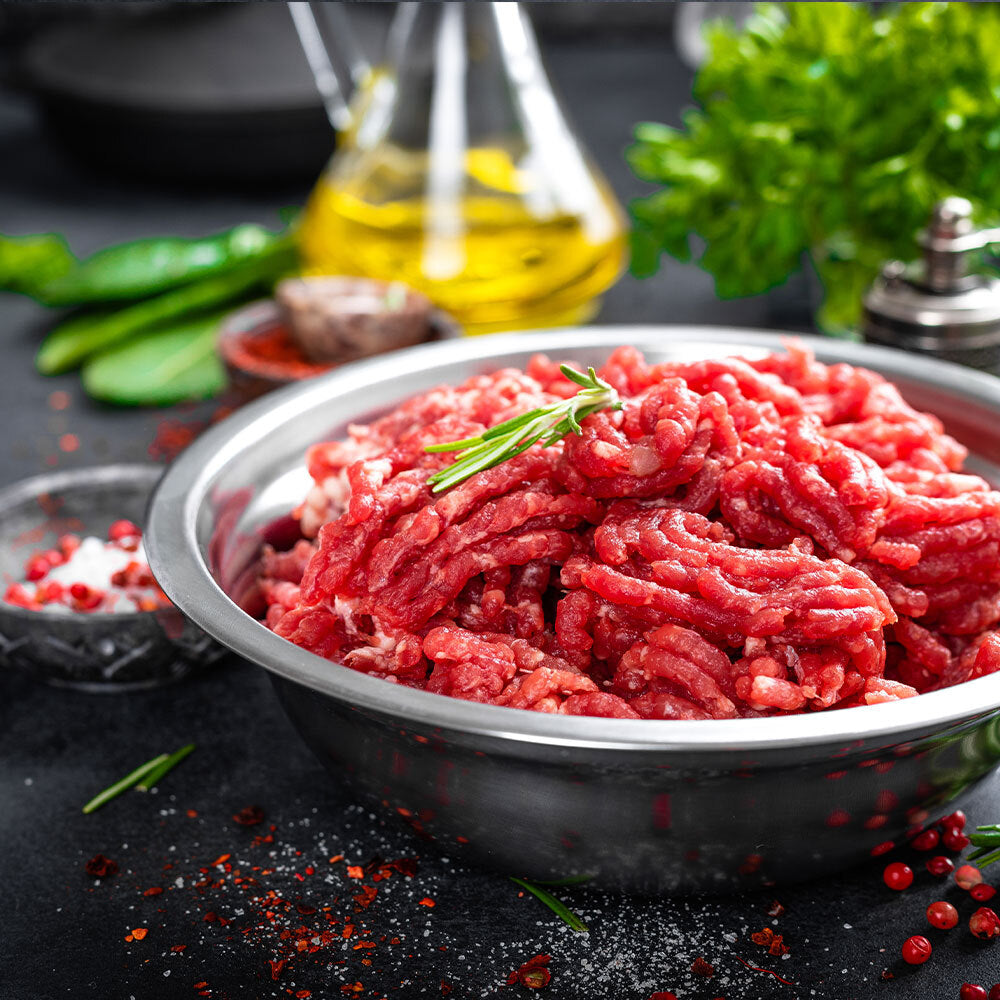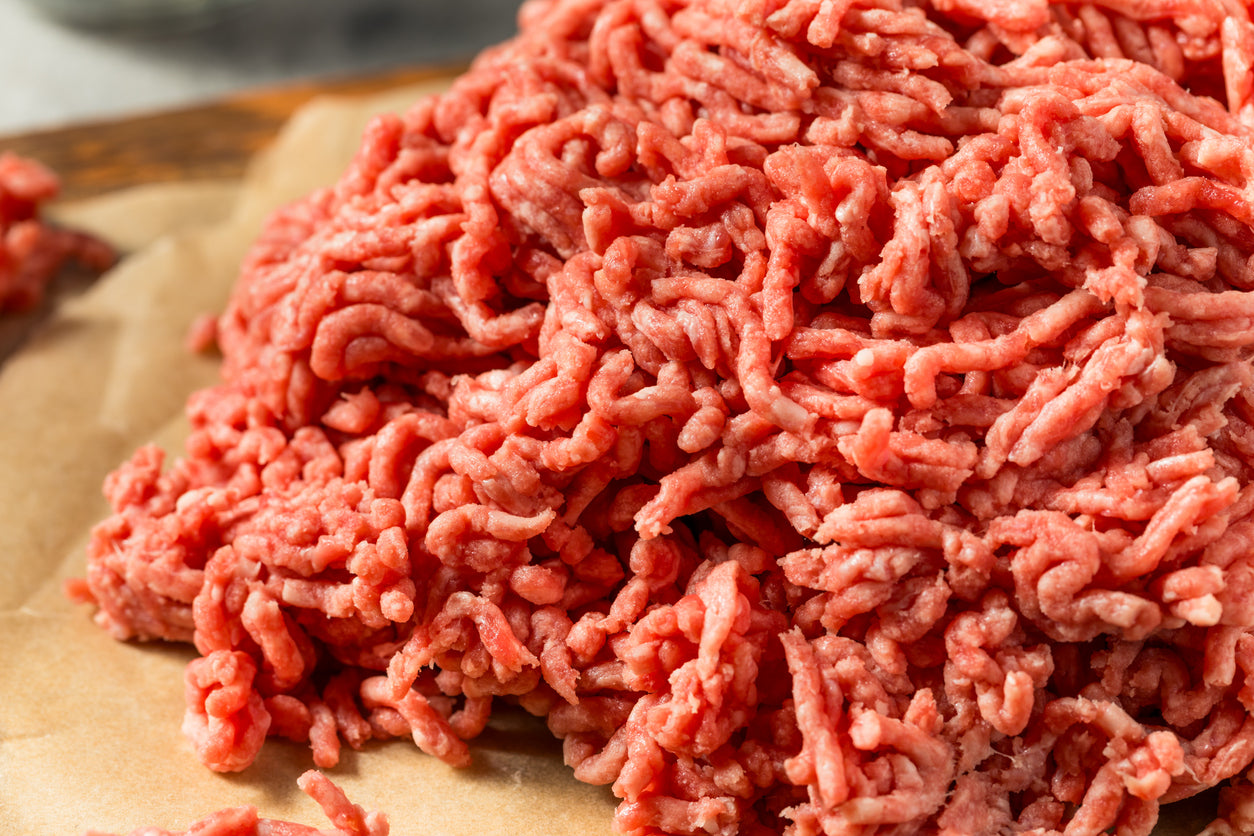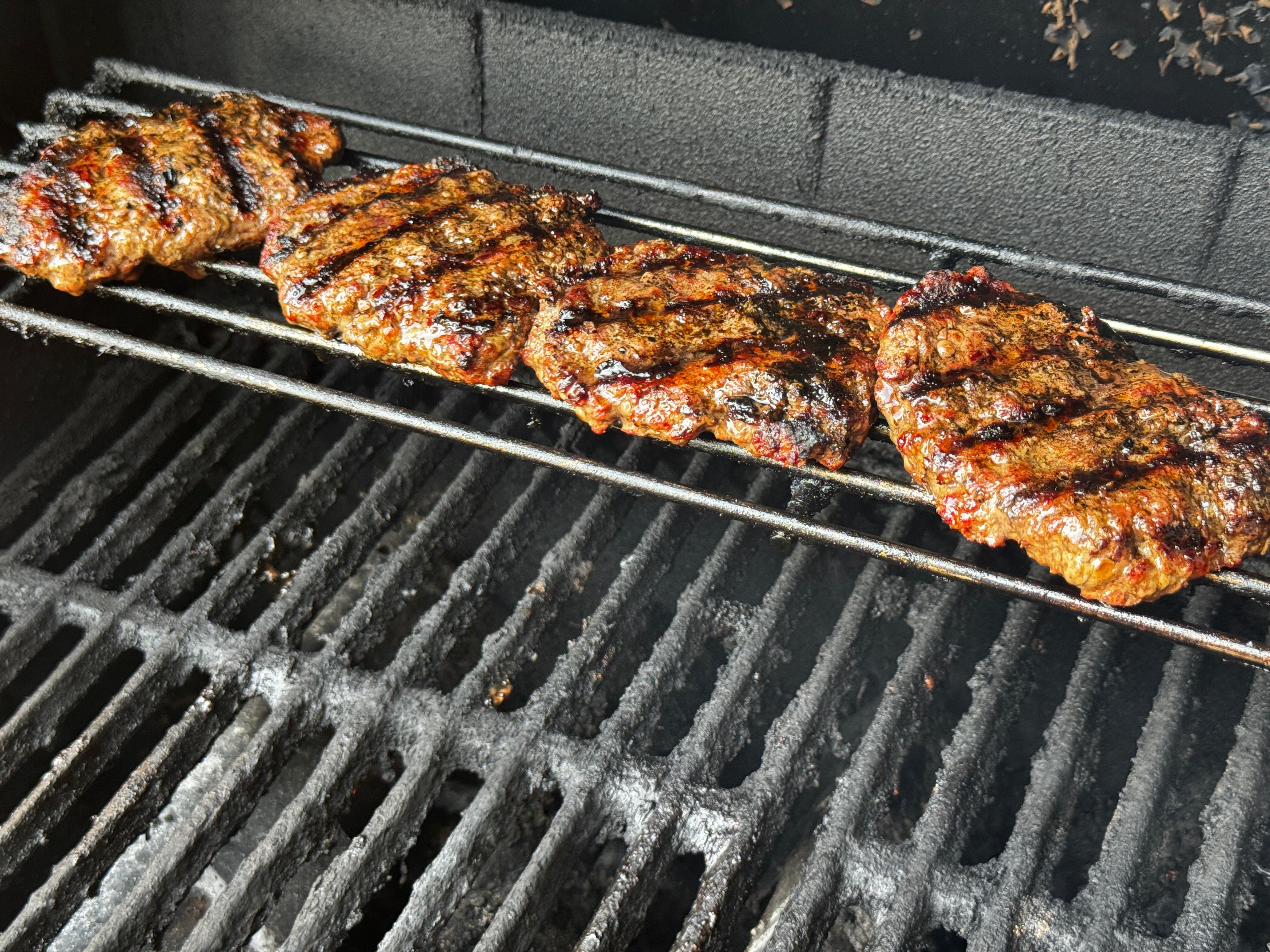
Commodities vs. Nutrition: How Our Food System Has Failed Us
Food in grocery stores are commodities. Meat, fruits, and vegetables are packaged and displayed in uniform rows, designed to look appealing and predictable. Global agriculture and grocery corporations thrive on this uniformity because it makes their operations efficient and profitable. But the truth is, we don’t eat for uniformity or for ease of shipping. We eat for nutrition—and nutrition is anything but uniform.
 A grocery is store designed for visual appeal, not nutrition.
This realization was part of what led me to regenerative farming. I started to see how much of our food system is designed to prioritize everything except our health. The emphasis on large-scale, fast, and standardized production means we’ve lost sight of the basic fact that not all food is created equal. Nutrition depends on how food is grown, how long it’s allowed to develop, and the quality of the soil it comes from.
Take soil health, for example. The soil isn’t just a medium to hold plants in place—it’s a living system, full of microbes, fungi, and minerals. These elements work together to feed plants the nutrients they need. In a natural system, plants absorb these nutrients over time, passing them along to us (or the animals) when they're eaten.
But industrial farming methods, including monocultures and heavy chemical inputs, deplete the soil of life. Even organic farms can fall short because they are still often grown as monocultures, and if out of season, grown in faraway places with lots of food miles. The result? Fruits and vegetables that look good on the outside but are nutritionally hollow.
This problem is made worse by how quickly food is harvested. In industrial systems, speed is the name of the game. Crops are picked as young as possible to maximize yield and extend shelf life. A strawberry or tomato, for instance, might be harvested while still green and shipped thousands of miles to ripen in transit. This doesn’t just affect taste—it affects nutrition. Plants need time to grow in nutrient-rich soil to accumulate vitamins and minerals. When they’re picked prematurely, they lose that opportunity.
A grocery is store designed for visual appeal, not nutrition.
This realization was part of what led me to regenerative farming. I started to see how much of our food system is designed to prioritize everything except our health. The emphasis on large-scale, fast, and standardized production means we’ve lost sight of the basic fact that not all food is created equal. Nutrition depends on how food is grown, how long it’s allowed to develop, and the quality of the soil it comes from.
Take soil health, for example. The soil isn’t just a medium to hold plants in place—it’s a living system, full of microbes, fungi, and minerals. These elements work together to feed plants the nutrients they need. In a natural system, plants absorb these nutrients over time, passing them along to us (or the animals) when they're eaten.
But industrial farming methods, including monocultures and heavy chemical inputs, deplete the soil of life. Even organic farms can fall short because they are still often grown as monocultures, and if out of season, grown in faraway places with lots of food miles. The result? Fruits and vegetables that look good on the outside but are nutritionally hollow.
This problem is made worse by how quickly food is harvested. In industrial systems, speed is the name of the game. Crops are picked as young as possible to maximize yield and extend shelf life. A strawberry or tomato, for instance, might be harvested while still green and shipped thousands of miles to ripen in transit. This doesn’t just affect taste—it affects nutrition. Plants need time to grow in nutrient-rich soil to accumulate vitamins and minerals. When they’re picked prematurely, they lose that opportunity.
 Tomatoes picked too early prioritizing shipping and shelf life over nutritional value.
The same principle applies to animals. Beef cattle, for instance, are often slaughtered as young as possible to keep production costs low. But animals raised on healthy pastures, allowed to graze and grow slowly in diverse ecosystems, develop richer stores of nutrients in their meat. The longer they live in these conditions, the more nutrition they provide.
Even if we try to make good choices, the food in our grocery stores is designed to deceive us. Those bright, uniform fruits and cuts of meat are a trick. They’re engineered for visual appeal, not for our health. The long journeys these products take—from nutrient-depleted soils, through premature harvests, and across miles of transportation—strip away what little nutrition they started with. By the time they reach the shelves, we’re left with something that looks nutritious but isn’t.
At Tyner Pond Farm, we take a fundamentally different approach. In the industrial system—whether you're shopping at Walmart or even at a store like Whole Foods—beef cattle are typically sent to processing at just 12 to 18 months of age. Even when you’re buying local beef or chicken, it’s a good idea to ask how old the animals were at slaughter because age plays a significant role in nutrition. Younger animals simply haven’t had enough time to develop the nutrient density that comes from living on diverse, healthy pastures.
Our beef is on our biologically rich pastures for 30 months or more. Right now, I’m eating a 15-year-old cull cow, and I know it’s some of the most nutrient-dense meat I’ve ever had. That extended time on healthy soil allows the animals to absorb more minerals and develop deeper, more complex nutrient profiles. This is especially true when they’re raised on regenerative pastures full of biodiversity.
Tomatoes picked too early prioritizing shipping and shelf life over nutritional value.
The same principle applies to animals. Beef cattle, for instance, are often slaughtered as young as possible to keep production costs low. But animals raised on healthy pastures, allowed to graze and grow slowly in diverse ecosystems, develop richer stores of nutrients in their meat. The longer they live in these conditions, the more nutrition they provide.
Even if we try to make good choices, the food in our grocery stores is designed to deceive us. Those bright, uniform fruits and cuts of meat are a trick. They’re engineered for visual appeal, not for our health. The long journeys these products take—from nutrient-depleted soils, through premature harvests, and across miles of transportation—strip away what little nutrition they started with. By the time they reach the shelves, we’re left with something that looks nutritious but isn’t.
At Tyner Pond Farm, we take a fundamentally different approach. In the industrial system—whether you're shopping at Walmart or even at a store like Whole Foods—beef cattle are typically sent to processing at just 12 to 18 months of age. Even when you’re buying local beef or chicken, it’s a good idea to ask how old the animals were at slaughter because age plays a significant role in nutrition. Younger animals simply haven’t had enough time to develop the nutrient density that comes from living on diverse, healthy pastures.
Our beef is on our biologically rich pastures for 30 months or more. Right now, I’m eating a 15-year-old cull cow, and I know it’s some of the most nutrient-dense meat I’ve ever had. That extended time on healthy soil allows the animals to absorb more minerals and develop deeper, more complex nutrient profiles. This is especially true when they’re raised on regenerative pastures full of biodiversity.
 Amy makes sure our chickens thrive on fresh pasture every day.
The same is true for our chickens. Industrial chickens are processed as quickly as possible, but ours are about one-third older by the time they’re harvested. They spend their days foraging on healthy pastures, eating what chickens are meant to eat. That extra time and access to a diverse environment translates into more nutrient-rich meat and eggs.
At the heart of what we do is a commitment to giving our plants and animals the time and environment they need to grow properly. It’s not just about producing food; it’s about producing real nutrition. Our goal isn’t just to feed people—it’s to ensure they’re eating food that truly nourishes them. Nutrition should be what we all eat toward, and that is the guiding principle behind everything we do at Tyner Pond Farm. By focusing on soil health, animal welfare, and extended growth times, we are working to produce the most nutrient-dense beef and poultry in the world. That’s our mission, and it’s one we believe matters—not just for us, but for everyone who cares about what they eat.
Amy makes sure our chickens thrive on fresh pasture every day.
The same is true for our chickens. Industrial chickens are processed as quickly as possible, but ours are about one-third older by the time they’re harvested. They spend their days foraging on healthy pastures, eating what chickens are meant to eat. That extra time and access to a diverse environment translates into more nutrient-rich meat and eggs.
At the heart of what we do is a commitment to giving our plants and animals the time and environment they need to grow properly. It’s not just about producing food; it’s about producing real nutrition. Our goal isn’t just to feed people—it’s to ensure they’re eating food that truly nourishes them. Nutrition should be what we all eat toward, and that is the guiding principle behind everything we do at Tyner Pond Farm. By focusing on soil health, animal welfare, and extended growth times, we are working to produce the most nutrient-dense beef and poultry in the world. That’s our mission, and it’s one we believe matters—not just for us, but for everyone who cares about what they eat.
 A grocery is store designed for visual appeal, not nutrition.
This realization was part of what led me to regenerative farming. I started to see how much of our food system is designed to prioritize everything except our health. The emphasis on large-scale, fast, and standardized production means we’ve lost sight of the basic fact that not all food is created equal. Nutrition depends on how food is grown, how long it’s allowed to develop, and the quality of the soil it comes from.
Take soil health, for example. The soil isn’t just a medium to hold plants in place—it’s a living system, full of microbes, fungi, and minerals. These elements work together to feed plants the nutrients they need. In a natural system, plants absorb these nutrients over time, passing them along to us (or the animals) when they're eaten.
But industrial farming methods, including monocultures and heavy chemical inputs, deplete the soil of life. Even organic farms can fall short because they are still often grown as monocultures, and if out of season, grown in faraway places with lots of food miles. The result? Fruits and vegetables that look good on the outside but are nutritionally hollow.
This problem is made worse by how quickly food is harvested. In industrial systems, speed is the name of the game. Crops are picked as young as possible to maximize yield and extend shelf life. A strawberry or tomato, for instance, might be harvested while still green and shipped thousands of miles to ripen in transit. This doesn’t just affect taste—it affects nutrition. Plants need time to grow in nutrient-rich soil to accumulate vitamins and minerals. When they’re picked prematurely, they lose that opportunity.
A grocery is store designed for visual appeal, not nutrition.
This realization was part of what led me to regenerative farming. I started to see how much of our food system is designed to prioritize everything except our health. The emphasis on large-scale, fast, and standardized production means we’ve lost sight of the basic fact that not all food is created equal. Nutrition depends on how food is grown, how long it’s allowed to develop, and the quality of the soil it comes from.
Take soil health, for example. The soil isn’t just a medium to hold plants in place—it’s a living system, full of microbes, fungi, and minerals. These elements work together to feed plants the nutrients they need. In a natural system, plants absorb these nutrients over time, passing them along to us (or the animals) when they're eaten.
But industrial farming methods, including monocultures and heavy chemical inputs, deplete the soil of life. Even organic farms can fall short because they are still often grown as monocultures, and if out of season, grown in faraway places with lots of food miles. The result? Fruits and vegetables that look good on the outside but are nutritionally hollow.
This problem is made worse by how quickly food is harvested. In industrial systems, speed is the name of the game. Crops are picked as young as possible to maximize yield and extend shelf life. A strawberry or tomato, for instance, might be harvested while still green and shipped thousands of miles to ripen in transit. This doesn’t just affect taste—it affects nutrition. Plants need time to grow in nutrient-rich soil to accumulate vitamins and minerals. When they’re picked prematurely, they lose that opportunity.
 Tomatoes picked too early prioritizing shipping and shelf life over nutritional value.
The same principle applies to animals. Beef cattle, for instance, are often slaughtered as young as possible to keep production costs low. But animals raised on healthy pastures, allowed to graze and grow slowly in diverse ecosystems, develop richer stores of nutrients in their meat. The longer they live in these conditions, the more nutrition they provide.
Even if we try to make good choices, the food in our grocery stores is designed to deceive us. Those bright, uniform fruits and cuts of meat are a trick. They’re engineered for visual appeal, not for our health. The long journeys these products take—from nutrient-depleted soils, through premature harvests, and across miles of transportation—strip away what little nutrition they started with. By the time they reach the shelves, we’re left with something that looks nutritious but isn’t.
At Tyner Pond Farm, we take a fundamentally different approach. In the industrial system—whether you're shopping at Walmart or even at a store like Whole Foods—beef cattle are typically sent to processing at just 12 to 18 months of age. Even when you’re buying local beef or chicken, it’s a good idea to ask how old the animals were at slaughter because age plays a significant role in nutrition. Younger animals simply haven’t had enough time to develop the nutrient density that comes from living on diverse, healthy pastures.
Our beef is on our biologically rich pastures for 30 months or more. Right now, I’m eating a 15-year-old cull cow, and I know it’s some of the most nutrient-dense meat I’ve ever had. That extended time on healthy soil allows the animals to absorb more minerals and develop deeper, more complex nutrient profiles. This is especially true when they’re raised on regenerative pastures full of biodiversity.
Tomatoes picked too early prioritizing shipping and shelf life over nutritional value.
The same principle applies to animals. Beef cattle, for instance, are often slaughtered as young as possible to keep production costs low. But animals raised on healthy pastures, allowed to graze and grow slowly in diverse ecosystems, develop richer stores of nutrients in their meat. The longer they live in these conditions, the more nutrition they provide.
Even if we try to make good choices, the food in our grocery stores is designed to deceive us. Those bright, uniform fruits and cuts of meat are a trick. They’re engineered for visual appeal, not for our health. The long journeys these products take—from nutrient-depleted soils, through premature harvests, and across miles of transportation—strip away what little nutrition they started with. By the time they reach the shelves, we’re left with something that looks nutritious but isn’t.
At Tyner Pond Farm, we take a fundamentally different approach. In the industrial system—whether you're shopping at Walmart or even at a store like Whole Foods—beef cattle are typically sent to processing at just 12 to 18 months of age. Even when you’re buying local beef or chicken, it’s a good idea to ask how old the animals were at slaughter because age plays a significant role in nutrition. Younger animals simply haven’t had enough time to develop the nutrient density that comes from living on diverse, healthy pastures.
Our beef is on our biologically rich pastures for 30 months or more. Right now, I’m eating a 15-year-old cull cow, and I know it’s some of the most nutrient-dense meat I’ve ever had. That extended time on healthy soil allows the animals to absorb more minerals and develop deeper, more complex nutrient profiles. This is especially true when they’re raised on regenerative pastures full of biodiversity.
 Amy makes sure our chickens thrive on fresh pasture every day.
The same is true for our chickens. Industrial chickens are processed as quickly as possible, but ours are about one-third older by the time they’re harvested. They spend their days foraging on healthy pastures, eating what chickens are meant to eat. That extra time and access to a diverse environment translates into more nutrient-rich meat and eggs.
At the heart of what we do is a commitment to giving our plants and animals the time and environment they need to grow properly. It’s not just about producing food; it’s about producing real nutrition. Our goal isn’t just to feed people—it’s to ensure they’re eating food that truly nourishes them. Nutrition should be what we all eat toward, and that is the guiding principle behind everything we do at Tyner Pond Farm. By focusing on soil health, animal welfare, and extended growth times, we are working to produce the most nutrient-dense beef and poultry in the world. That’s our mission, and it’s one we believe matters—not just for us, but for everyone who cares about what they eat.
Amy makes sure our chickens thrive on fresh pasture every day.
The same is true for our chickens. Industrial chickens are processed as quickly as possible, but ours are about one-third older by the time they’re harvested. They spend their days foraging on healthy pastures, eating what chickens are meant to eat. That extra time and access to a diverse environment translates into more nutrient-rich meat and eggs.
At the heart of what we do is a commitment to giving our plants and animals the time and environment they need to grow properly. It’s not just about producing food; it’s about producing real nutrition. Our goal isn’t just to feed people—it’s to ensure they’re eating food that truly nourishes them. Nutrition should be what we all eat toward, and that is the guiding principle behind everything we do at Tyner Pond Farm. By focusing on soil health, animal welfare, and extended growth times, we are working to produce the most nutrient-dense beef and poultry in the world. That’s our mission, and it’s one we believe matters—not just for us, but for everyone who cares about what they eat.
Previous post
Feed the Dog: The New Way I'm Thinking About Health and Nutrition
Next post
